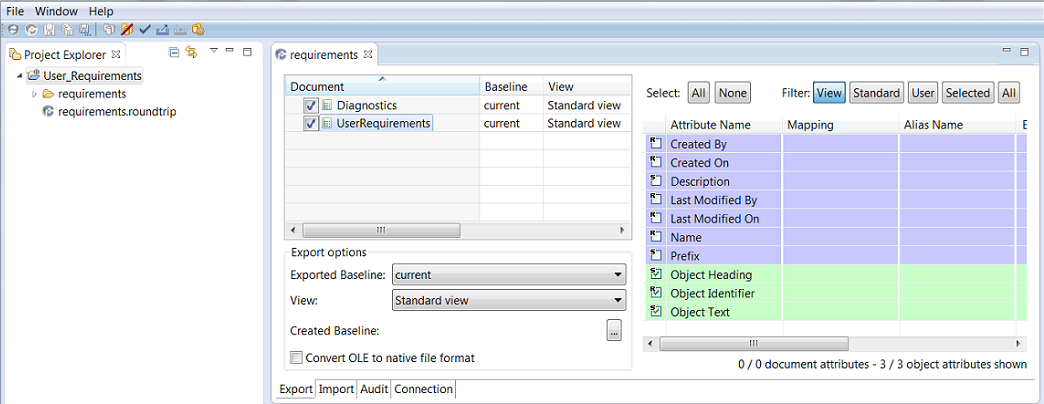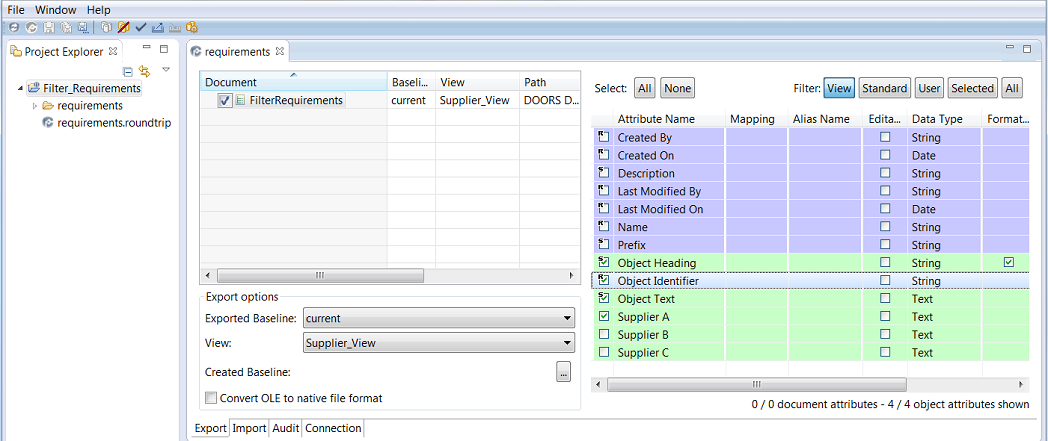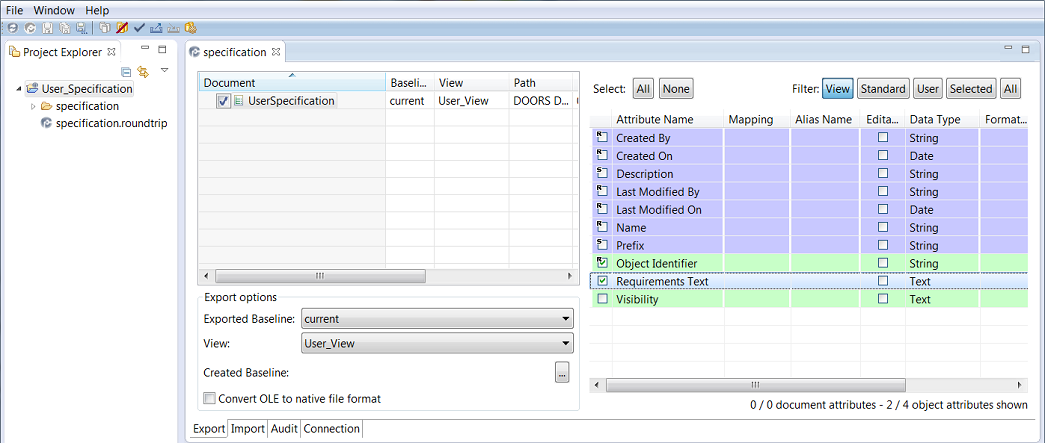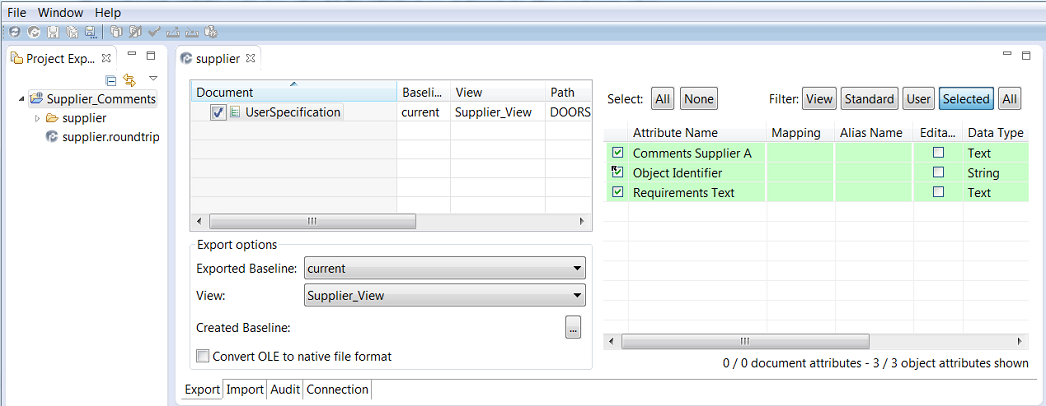Plan exchange process
The basis for any successful roundtrip is a well-defined process that is understood both by the initiator of the roundtrip as well as by all their business partners who participate in the exchange process. An exchange plan that contains all relevant information about the exchange process and was agreed upon by all business partners lies at the heart of the exchange process.
Plan exchange process
Before the roundtrip initiator can start with the actual exchange of documents with their business partners, they have to define all relevant decisions about the exchange process and document them in an exchange plan.
Step 1: Scope - Select the documents for the roundtrip
The first decision for the initiator of the roundtrip is to decide which documents are relevant for the exchange process.
Example 1. Example:
In our example, the initiator of the roundtrip identifies two documents in their RE/RM tool that are relevant for the requirements analysis phase: A document with the user requirements and another with the diagnostic specification.
Figure 122. User requirements and diagnostic specification

Step 2: Baseline - Select baseline with the relevant condition of the document
In order to ensure that the condition of the documents can be reproduced, it is necessary to decide which baseline of the documents should be used.
It is a good idea to create a baseline in the RE/RM tool as soon as all requirements in the document are internally approved. This allows you to continue to work on the document, while you can always find the version of the document that you sent to your business partners by selecting the baseline. |
Step 3: Content - Select requirements and attributes for the roundtrip
The documents that the initiator selected for the roundtrip may contain requirements that are not relevant for the business partners, or which are strictly confidential. The same applies to the attributes within the documents. The initiator has to identify these requirements and attributes, and define rules that filter the document in a way that only the information relevant for the business partners is distributed to them.
Figure 123. User defined view export

This step should, to keep confidential information confidential, not be described in the distributed exchange plan. |
Example 2. Example:
In the user requirements specification, there are three attributes:
Figure 124. User specification export

Attribute | Description |
|---|---|
ID | the unique identifier is needed by the business partners to refer to the requirements in the communication with the initiator. |
Requirement Text | the requirement text is needed by the business partners. |
Visibility | only requirements that are not confidential may be distributed to the business partners. Additionally, the attribute visibility itself should not be part of the roundtrip because it is not relevant for the business partners. |
As the initiator wants their business partners to comment on the requirements, they first need to add a comment attribute for each of their business partners: This ensures that all business partners are able to write their comments concurrently, as the changes made by each business partner to their comment attribute are fully independent from the changes made by the other business partners.
Figure 125. Supplier comments export

ID | Requirement Text | Visibility | Comments Supplier A | Comments Supplier B |
|---|---|---|---|---|
1 | The system shall ... | All | ||
2 | The system shall ... | Internal | ||
3 | The system shall ... | Supplier A |
The initiator now needs a rule that filters the requirements specification so that the confidential requirements and the visibility attribute are not part of the roundtrip. An additional restriction to the filtering rule is that each business partner should receive only their own comment attribute, but not that of the other business partners.
For Supplier A, the resulting view should look like this:
ID | Requirements Text | Comments Supplier A |
|---|---|---|
1 | The system shall ... | |
3 | The system shall ... |
Step 4: Access - Access strategy and conflict resolution
The decision of which attributes may be edited and which may only be viewed by the business partners is less a technical one but mainly a question of the exchange process. The business partners have to understand which attributes they are allowed to edit or not to edit, and why.
Example 3. Example:
The exchange process in the example demands that only the initiator is authorized to change or delete requirements while allowing the business partners to update their comments concurrently. Only the Comment Supplier A 1 attribute may be edited by business partner Supplier A.
• The responsibilities of the initiator and their business partners.
• The contact persons from initiator and their business partners, plus the communication structure.
• The delivery dates for various deliverables, like the first draft of the requirements from the initiator, the first round of comments from the business partners, or the revised requirements with consolidated comments from the initiator.
Step 5: Process - Defining responsibilities and delivery dates
Parallel to the other steps, there are general decisions on the exchange process that have to be made, documented in the exchange plan and communicated.
Parent topic